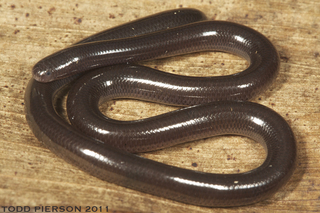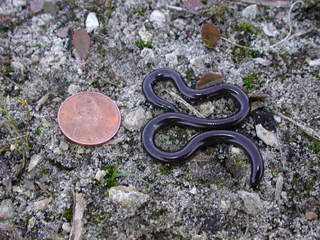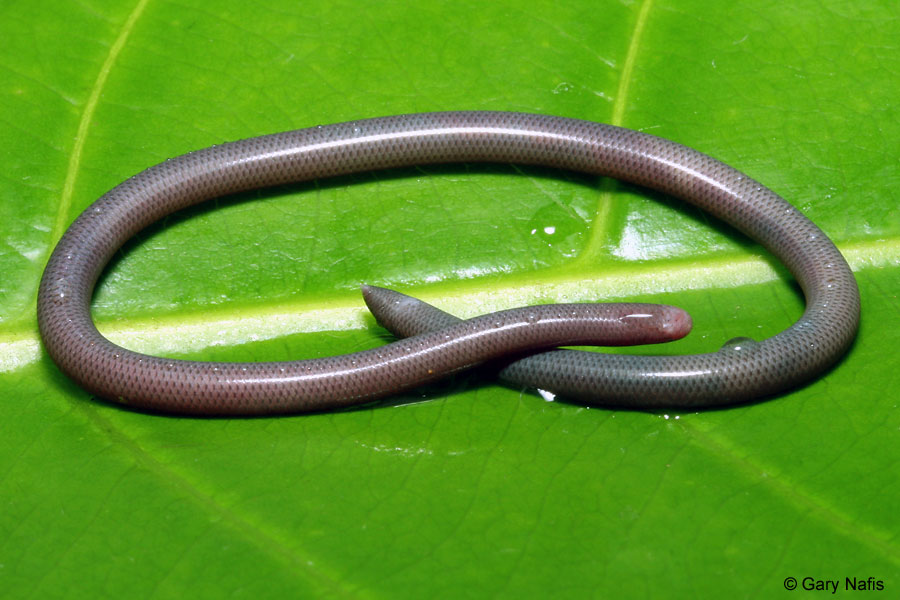Ramphotyphlops braminus
Flowerpot snake in Same ( East Timor)
The flowerpot snake ( Ramphotyphlops braminus ), also Brahmin worm snake, is a non-toxic snake of the family of blind snakes ( Typhlopidae ).
Features
The flowerpot snake is a very small snake with an average body length of 6 to 16 and a maximum length of 23 centimeters. The head has a rounded snout and stunted, but visible eyes and is not deducted from the neck. The head scales are small and similar to body scales. The body is slim and shiny silvery gray, brownish or glossy purple - black with gray, cream-colored or brownish belly. The tail carries a small spur.
Way of life
Flowerpot snakes burrowing in leaf litter or soil between plant roots and feed on insects, their eggs and larvae. As the only known snake species they multiply purely parthenogenetic. There are therefore only females that lay in favorable conditions from one to eight eggs from which emerge cloned pups. The set of chromosomes in contrast to other vertebrates, not diploid, triploid but, of each of the 14 chromosomes are therefore three of them before.
Dissemination
The original distribution area of the flowerpot snake lies in Southeast Asia and India. The species has been but, probably, very far abducted by adhering to plant earth by man. Because of parthenogenetic reproduction verschlepptes an animal is sufficient here to establish a new population. Flowerpot snakes are found on every continent except Europe and Antarctica. Populations are known from Taiwan, Indonesia, Papua New Guinea, northern Australia, Hawaii, North and Central America, Africa, Madagascar and various islands in the Indian and Pacific Oceans. There are colonized at altitudes 0-1500 meters areas.
Swell
- Mark O'Shea: Boas and Pythons of the World. New Holland Publishers, 2007, ISBN 978-1-84537-544-7.
- Description of the Florida Museum of Natural History










